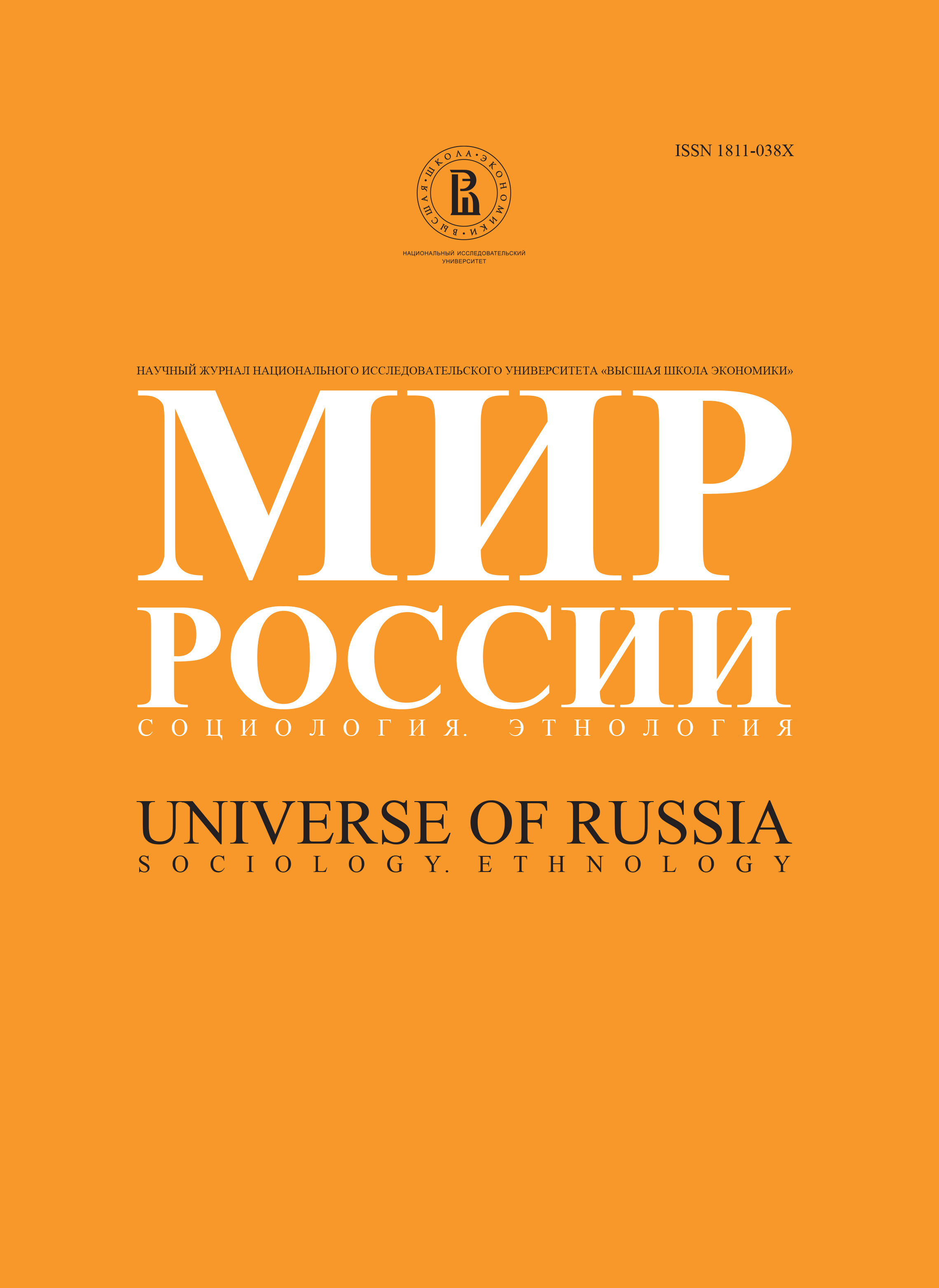Social and social-psychological mechanisms of formation of the social identification of the individual
Abstract
The problem of the social identification of the individual and group solidarities is becoming increasingly important in theoretical discussions and empirical research. Radical changes in economical, social and political life in Russia create a unique chance to investigate the mechanisms by which the solidarities and the new social identities are formed. Crisisridden society provokes the crisis of identity. People are loosing or demolishing their former social identities such as Soviet people or USSR citizens and also have to search new identities or to hold former ones.Article deals with the outcomes and empirical findings of research project supported by Russian Foundation for Humanitarian Studies. The data was obtained from nation-wide surveys (6 surveys during May 1992-November 1994) and intensive studies of small samples of different groups: workers, engineers both in state and privatized enterprises, students, brokers. The technics used were test "Who am I?", test of semantic differential, technics of uncompleted sentences and others. The main outcomes concern the hierarchy and dynamics of identifications and socio-group differences.
A human being experiences a deep need to be a part of communities of people like himself. Crisis conditions accentuate this need for group protection, solidarity, the search of stability and reinforcement of one's self-esteem. Thus identifications with the nearest social meluaux (family, friends, workfellows) are becoming the most prominent. Contact group play the dominant role. Beyond this comparatively narrow circle of everyday practices the social space is formed on the basis of stereotypes and models as well as on basis of contrasts and unstable categorizations. Solidarities with wide social communities especially citizenship and politically-ideological ones are the most weakened.
During the period of "shock therapy" and political crisis (spring-summer 1993) total decline of identifications has taken place which then turned to an increase. This looks as a consequence of adaptation to the changing social space. Adaptation to changes goes through different models. The adaptive capabilities of younger more educated people are higher than those of older people with a narrower horizon. Slimmed personnel experience an accentuated sense of marginality relative to low-skilled workers and people of the older generation are more inclined to retain the customary social identities of their past, while young people generally have no sense of large communities.
Individual strategies of social identification differ substantially. Everyday interpersonal and intergroup interactions are separate from "exalted" identifications with large communities. The pragmatists are more differentiated: some adapt to the changing conditions by expressing solidarity with the immediate surroundings (in addition to close groups) while others are oriented toward prosperous and business-like people. The theoretical explanation of the findings is based on a pluralistic approaches combining sociological and sociopsychological interpretation.






